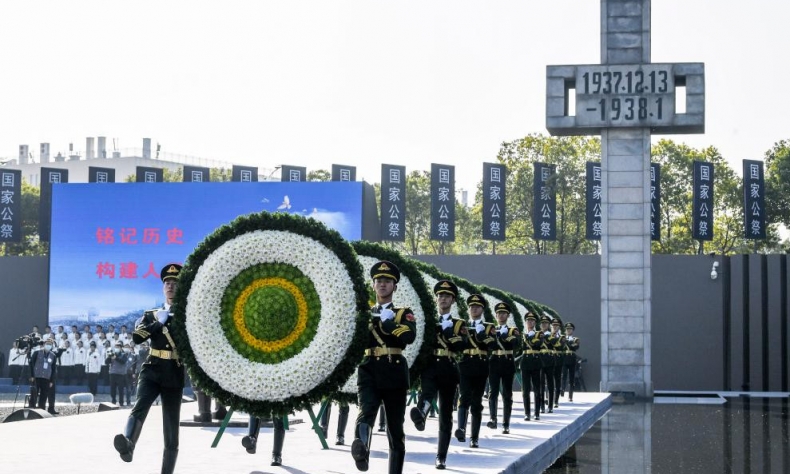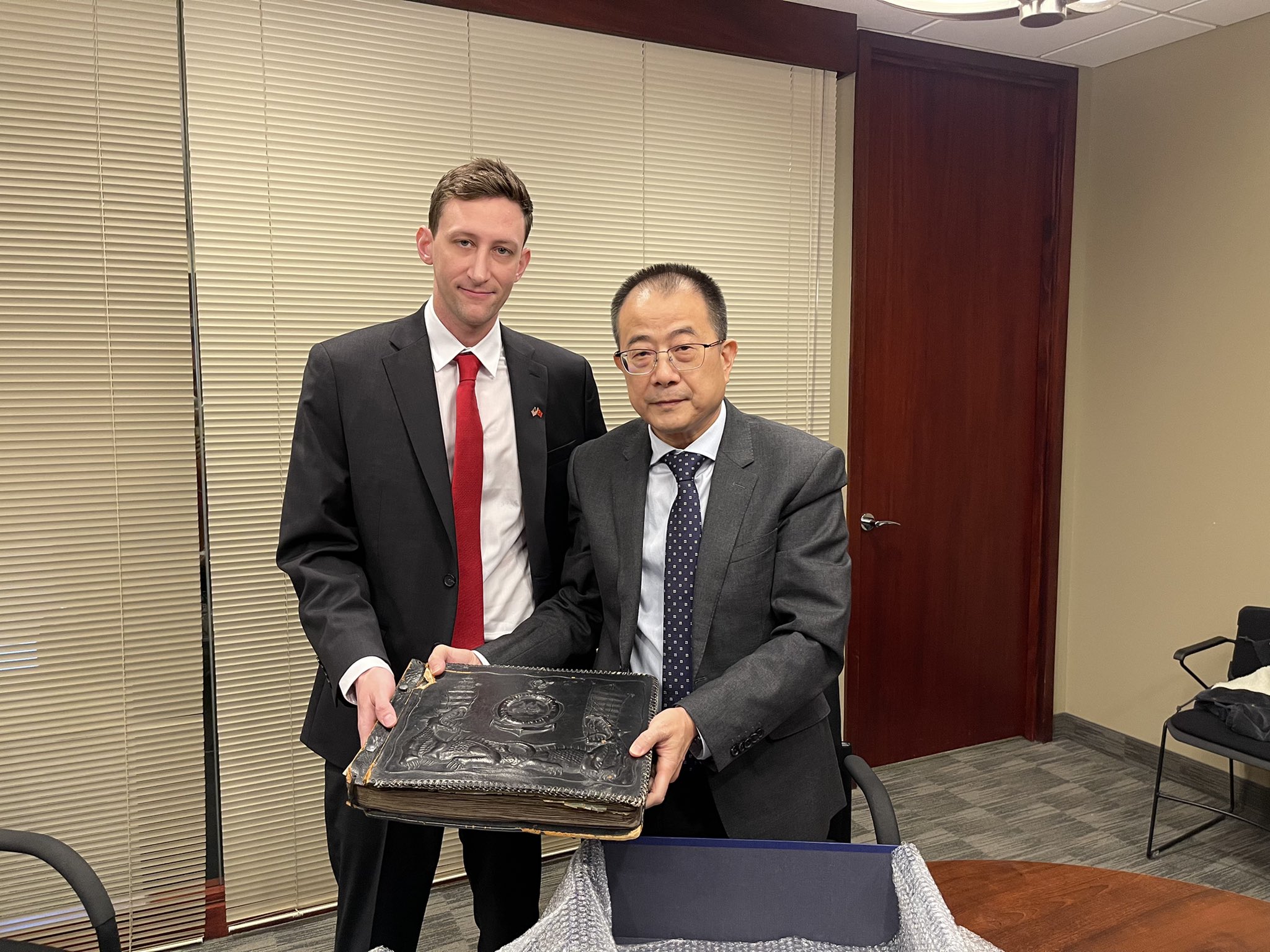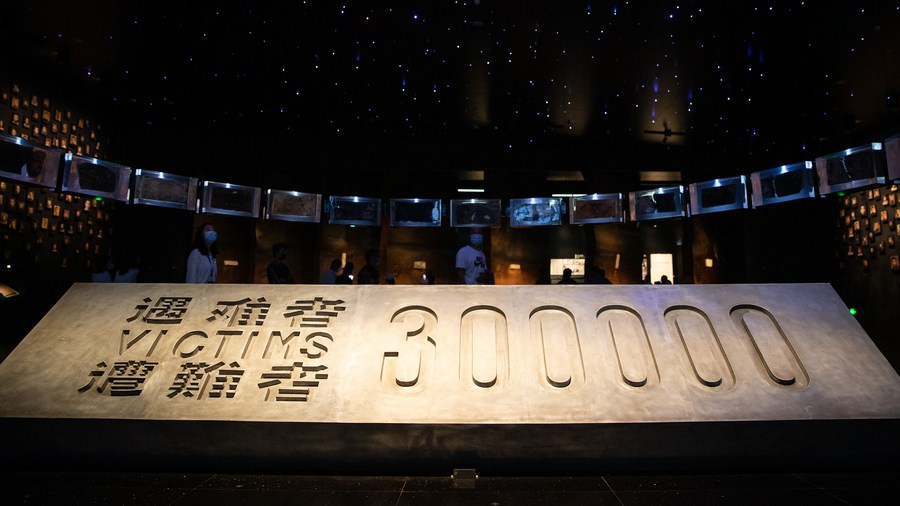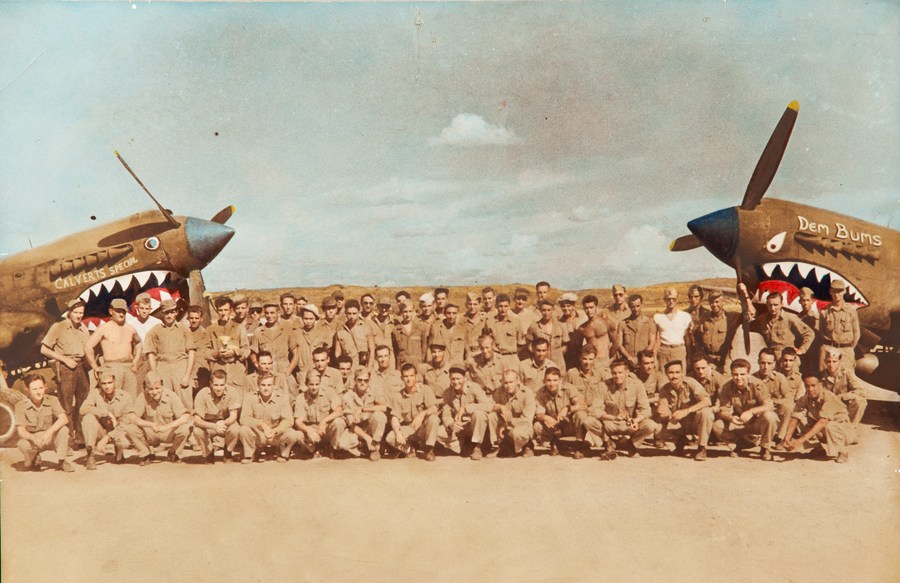Photographic Forewarnings

Urging avowed appreciation of peace and people-to-people ties among folk through the stark images compiled in a World War II photo album is the personal mission of one American man.
A shiver ran through Evan Kail at the sight of photos – in an album sent to him by a customer in 2022 – of corpses, some scattered, others piled, on a city street. The caption, “Nanjing Road” instantly evoked for him the infamous Nanjing Massacre of 1937-38, when the Japanese soldiers murdered 300,000 or more Chinese civilians and soldiers. Cognizant of the Japanese government’s obdurate denial of this atrocity, Kail took it upon himself to publicize and preserve these images by donating the album to China.
More than a year has since passed. In November of 2023, Kail posted the digital version of the album on his website, along with an article explaining the impact it has had on his life. It is his hope that these horrific images will induce succeeding generations to witness and learn from war’s inherent evils. Kail’s actions embody the strong ties between Chinese and American peoples.
Learning through error
Evan Kail is an American social media influencer and owner of the St. Louis Park Gold & Silver buy-and-sell business, about which he often posts videos with topical and comedic overtones. One viewer sent the photo album to him in August 2022.
Dated 1937, the album was compiled by former U.S. soldier Leslie G. Allen Jr., during his months of service in China. Allen died in 1964, having bequeathed the album to his widow. She later gave it to the viewer’s late father as partial payment for work carried out. Upon discovering the album, the viewer sent it to Kail. The appalling images of carnage that it contained, among the more aesthetically impressive shots of the Forbidden City and everyday Shanghai street scenes, prompted him to share the album with a wider audience.
Kail posted his video about the album and the Nanjing Massacre on his TikTok account. It went viral in about six hours, having received millions of views internationally, but especially in China. One comment read, “I’ve never heard of Nanjing, so I think that more people should learn about what happened there.”

TikTok rules disallowed him from including graphic images in his video, but as some viewers asked to see those in the album, Kail posted a few on Twitter, now known as X, which has less stringent rules. He soon hit the headlines, and subsequently gave interviews to The New Yorker, Rolling Stone, and NPR, among others. More and more people thus learned about the Nanjing Massacre, and it became a popular topic for discussion.
Such discussion revealed, however, that Nanjing Road was not in Nanjing, where the massacre occurred, but in Shanghai. Kail was consequently accused of exploiting a war crime to gain fame. When acknowledging this disastrous mistake, Kail explained that he had been so emotionally overwhelmed by the photos that he neglected to double-check their origin. He nevertheless received threats, such as “Watch your back,” and suffered harassment, some from Japanese accounts. Things reached a pitch that forced him to carry a gun for safety.
In desperation, Kail sought legal advice. When his lawyer asked him where he wanted the album to be, Kail answered, “A museum, but not an American one. It’s become clear to me how much the contents of this album still affect Chinese society. If you look online, it’s becoming a symbol of painful Chinese history, so it belongs there. No question about it.” Kail accordingly bought the album from the previous owner for US $1,000 and set about donating it through the relevant Chinese authorities.
History’s lessons
After donating the album to the Chinese Consulate General in Chicago on November 16, 2022, Kail received a letter from the Consul General saying, “History serves as a mirror for the people today, and your donation certainly helps inspire everyone with a kind heart to safeguard peace.”
Kail has a Jewish heritage. He hence deeply relates to the suffering that Chinese people endured during the Nanjing Massacre. He told China Today, “People can learn from a past tragic event like the Nanjing Massacre, analyze genocide as a whole, recognize that it’s wrong, and do what they can to prevent it from happening.”

The Nanjing Massacre marks a painful chapter in Chinese history, yet Japan has repeatedly denied and hence refused to apologize for it. Though Kail made a mistake regarding the location of the Japanese army’s atrocities, it has no bearing on the lasting trauma that the war inflicted on Chinese people. And this error did raise people’s awareness of the Nanjing Massacre. As Kail told The New Yorker, “If the conversation is genocide, and someone is being educated, then nothing is lost.”
December 13, the date on which the Nanjing Massacre began in 1937, has been enshrined as the National Memorial Day for Nanjing Massacre Victims.
The album’s significance lies not only in constituting evidence of a war crime, but also, as the conclusion of the main exhibition of the Memorial Hall of the Victims in Nanjing Massacre by Japanese Invaders says, “To forget history is an act of betrayal, and to deny a crime will only allow the crime to be repeated. The history of the Nanjing Massacre warns us to remember history and cherish peace, so as to create a better future.”
Build people-to-people ties
Kail is from the Midwest state of Minnesota in the United States. Though his knowledge about China is limited, Kail is one hundred percent sure that he made the right decision in publicizing the photo album. His experience stands as one of many examples of friendship between Chinese and American peoples.
During the time he was besieged with threats and harassment, Chinese people would come to Kail’s store to hug him, while others encouraged and gave him support on social media. Among the many letters he also received was one from an overseas student, born in Nanjing City, who said, “As a Chinese person, I sincerely thank you for your support, and as a child of Nanjing, I also want to say thank you for preserving, protecting, and showing the world what we have suffered in history.”
These staunch expressions of support comforted Kail and helped him to endure the hard times, as well as strengthened his resolve to donate the album to China. The Consul General later presented Kail with a porcelain tea jar. Kail eventually discovered that it is one of China’s highest diplomatic honors, and the last American recipient was Richard Nixon, the first U.S. president to visit the People’s Republic of China and thus open a new chapter of bilateral relations.

History stands testament to such mutual help. When Japan invaded China during World War II, the American volunteer group, composed of American pilots and nicknamed the Flying Tigers, helped China to fight against the Japanese invaders. In 1971, moreover, nine American table tennis players were invited to Beijing for exhibition games with Chinese players, so breaking the ice between the two countries toward establishment of diplomatic ties. Expanding people-to-people exchanges has enabled Chinese and American peoples to know more about each other.
However, the past few years have seen ups, downs, and even confrontations in China-U.S. relations. Having reflected on these, Kail told China Today, “I think a problem that China and the U.S. have right now is that the differences in our cultures, governments, and ways that we live our lives seem so great that we see only the barriers between us rather than the simple fact that we are all human.” He went on, “We shouldn’t try to persuade another country that our way of life is better than theirs, but instead to show that other country that we also exist.”
The contrasting images the album contains of beautiful sceneries and brutal wars is a stark reminder of the destruction that war embodies. Today, to prevent escalating tensions, or even war, China and the U.S. should understand more about each other. The current exchanges between the two peoples are a good starting point.
In that regard, Kail has been doing his own research on China and its history in efforts to learn more about the country. He may even visit the Middle Kingdom at an appropriate time and make Nanjing his port of entry. Kail also wants to help Chinese people know more about America by sharing details of his daily life and business, as well as aspects of American culture, with the 137,000 followers on his Xiaohongshu account, the Chinese version of Instagram.
“I want you to know who I am, what I do, and the education that I’m trying to provide, not just about history, but also about coins, currency, collectibles, the markets of gold and silver, [and] the economics,” said Kail as he introduces American culture for Chinese viewers. Such interactions are helping nurture people-to-people ties between the two countries.
The original compiler of the photo album wrote on the first page, “Hoping that you might find this at the same time instructive.” The instructive lesson behind it – about the value of peace and people-to-people ties – becomes ever more relevant, not just to China and the U.S. but, given current geopolitical situations, to the world as a whole. May the instinctive shiver that war evokes forever rest in peace.
 Facebook
Facebook
 Twitter
Twitter
 Linkedin
Linkedin
 Google +
Google +










